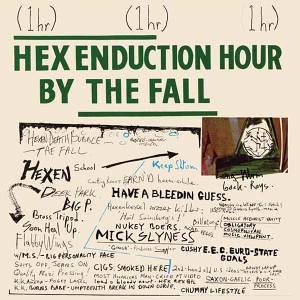"Hey there, fuck face!"
In May 2007 I found myself drifting to sleep in a hot, white-painted room in Salford University. All around, studious faces creased in contemplation as the man on the podium unleashed earnest scholarly thoughts about the seventh track on The Fall’s revered fourth album, Hex Enduction Hour. Following the talk, and after some persuasion, said track filled the room, altering the complexion of this curious gathering.
I was attending the utterly bizarre ‘Messing Up The Paintwork: A Conference on the Aesthetics and Politics of Mark E. Smith and The Fall’. For myself, if not for anyone else, the feelings on that day proved emotional, if hardly nostalgic. I wasn’t at all sure that such an event should have happened. I wasn’t sure that I wanted to be there. My mind cast back to 1983, sitting in the Prestwich flat shared by Mark E. Smith and his partner and band manager, Kay Carroll.
"You see the fucking thing is I ‘ave no truck with nostalgia freaks," he would say. "We’ve been round the world, man. I’m not gonna play ‘Totally fuckin’ Wired’ for a load of people who can’t keep up with us."
This was how Mark E. Smith introduced me to Hex Enduction Hour; an album deliberately aimed at creating a Year Zero effect, carrying The Fall to a whole new level. Smith’s irritation followed a few notably sullen crowd reactions to the barrage of, as then, unrecorded material: the songs that would provide the heart of Hex.
When the album finally arrived, it defied belief. It still does, listening to it now, 27 years later, in its ‘Deluxe Edition Format’. I play it over and over in September 2009, I am reunited after two decades and my head constantly tilts like a puppy dog. Don’t remember that bi. . . don’t remember tha. . . and on and on.
It was an oddity, even in 1982. Back then, the post-punk tumble had finally run dry, leaving a lightened thirst for the kind of colourful pop that would soon be cherished by both The Face and the NME — some of it excellent, but much of it the kind of fizzle that would give the decade a bad name. Typically perverse, The Fall chose this moment to unleash a dark if not difficult album. A slab of blackened rock — arguably the band’s most rocky outcrop to date — and yes, darker than the deepest sea. It really was no surprise when ‘Hip Priest’ found its way onto the soundtrack of Silence of the Lambs. (Thomas Harris had written the book, Mark E. Smith once claimed, to the sound of The Fall.)
What ensues is an album where mundanity and sizzling, disguised reportage (like a diary, indeed) were raggedly entwined.
Watching closely from the sidelines along with a number of unholy ragged Fall-ites from the first gigs, one also felt a flash of selfish indignation. For this was the record which saw the band promoted, as it were, with gates opened for a flood of new faces. In short, they no longer seemed like our local band, no doubt much to Mark’s delight. What he hadn’t realised, though, was that the album would be deemed so accessible; bizarrely, one almost sensed his disappointment at the largely supportive reviews. It was, after all, a deliberate attempt to step away from the gawdy pop scramble.
Indeed, there are moments — ‘Iceland’ among them — where a new ocean of avant garde possibility opened before them and the band (the line-up assembled for Dragnet following the rebel split of Bramah and Baines) were really beginning to show their metal — almost literally. This, at last, was confirmation that Mark and Kay had recruited with intelligence and perception. On the twin ‘Winter’ tracks. hinged on either side of the LP,
the musicality had grown to match the band’s growth — both in terms of underground success and geographically, as Smith gathered information from exploits in Iceland, New Zealand, Australia and America. This was a big moment. Until Hex, a great deal of Mark’s writing had retained a north Manchester bunker-mentality (‘C’n’CStop Mithering’ on Grotesque being a fine example).
This outta-the-bunker global Fall desired a bigger sound, a sound that would cast bigger, darker shadows, and here it was. Blasting from every corner of Hex the initial connection between The Fall and myriad underground scenes in America, not least an embryonic Seattle, was formed. Belligerently out of step with the music unfolding in Britain in 1982 it may have been, but we loved it for that . . . and we love it still as it gains unlikely relevance in 2009.
But how to take the packaging, the very weird concept of a ‘Deluxe’ Hex? One can accept the bonus tracks with good grace; particularly the Peel Session from September 1981 which gave us a sneak preview of ‘Who Makes the Nazis?’, ‘Deer Park’ and the obviously antique ‘I’m Into CB’ (now a glimpse back to a pre-mobile phone proletariat struggling with the Home Office-controlled technology of the day: Citizens Band radio). It also presents us with a ragged six-track live outing, most notable for the deliciously off-kilter ‘Jazzed Up Punk Shit’. Although welcome, the additions do tend to weaken the full-force and uniqueness of Hex, arguably — and many do argue — The Fall’s mightiest hour.


